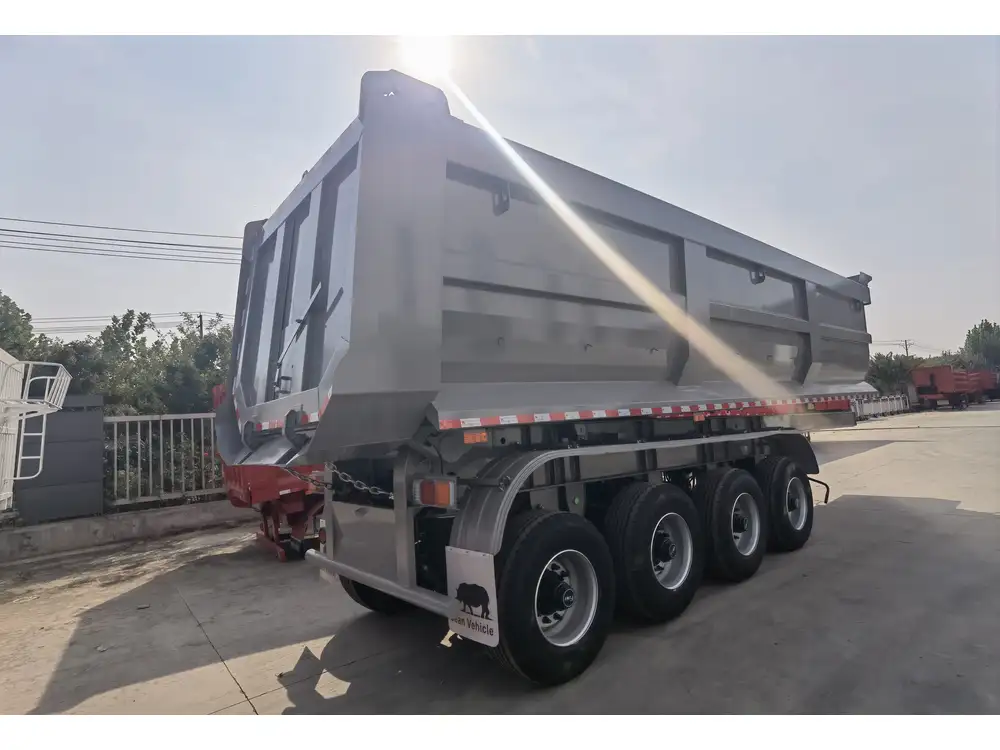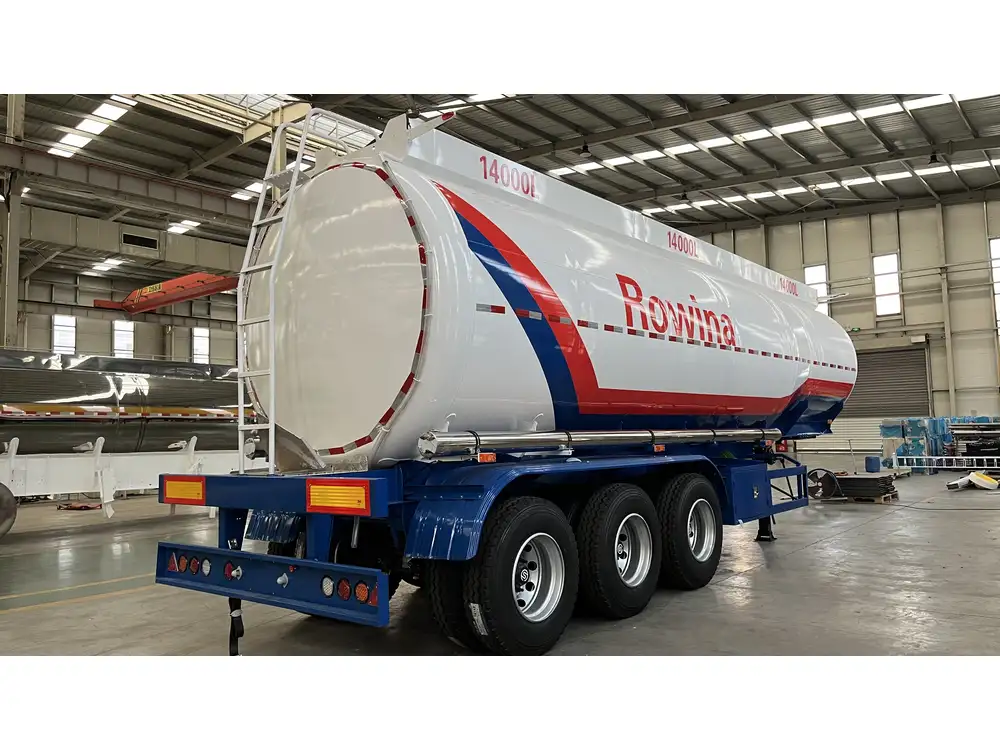When it comes to the operation of semi-trailers, the integrity of wheel bearings is paramount. They serve as the unsung heroes in allowing for smooth movement and load-bearing capacity. However, they are also susceptible to excessive heat, which can lead to catastrophic failures if not monitored correctly. Understanding how heat affects wheel bearings can help in preventive maintenance, thereby extending the lifespan of your semi-trailer.
The Importance of Wheel Bearings in Semi-Trailers
What Are Wheel Bearings?
Wheel bearings are precision components that allow the wheels of a semi-trailer to rotate smoothly with minimal friction. They are designed to carry loads efficiently while withstanding various stresses from weight and environmental factors. In many cases, they consist of an inner and outer ring, a cage, and rolling elements (balls or rollers) that facilitate rotation.

Functions of Wheel Bearings
- Load Distribution: They spread the weight of the trailer evenly across the wheel assembly.
- Reduced Friction: Bearings minimize friction between moving parts, promoting efficient wheel rotation.
- Heat Dissipation: Properly functioning bearings dissipate heat generated from friction, ensuring safe operation.
Heat Generation: Causes and Consequences
Understanding Heat in Wheel Bearings
Wheel bearings generate heat due to friction during operation. This friction can arise from several factors, including but not limited to:
- Inadequate Lubrication: Oil or grease reduces friction, and any deficiency in lubricant can lead to overheating.
- Overloading: Exceeding the weight capacity of the trailer creates excessive pressure on wheel bearings.
- Poor Alignment: Misalignment of the wheel can lead to uneven wear and increased friction.
- Environmental Factors: High ambient temperatures and rough terrains contribute to elevated bearing temperatures.

Consequences of Overheating
Excessive heat can lead to a myriad of problems, notably including:
- Bearing Fatigue: Continuous heat exposure can weaken the structural integrity of bearings, leading to premature failure.
- Contaminated Lubrication: Heat can break down lubricants, causing viscosity changes that hinder effective lubrication.
- Seals/Dust Covers Damage: High temperatures can degrade the seals, allowing contaminants to enter, which further exacerbates wear.
- Wheel Lock-Up: In extreme cases, overheating can cause the wheels to lock up, leading to catastrophic accidents.
What Temperature is Too Hot for Semi-Trailer Wheel Bearings?
Temperature Thresholds
The typical operating temperature for semi-trailer wheel bearings ranges between 160°F to 180°F (71°C to 82°C). However, it’s crucial to monitor these temperatures closely, as specific thresholds indicate potential problems:
- Up to 180°F (82°C): Normal operating range.
- 180°F to 200°F (82°C to 93°C): Caution advised; potential for overheating.
- 200°F to 220°F (93°C to 104°C): Critical attention required; likely bearing failure imminent.
- Above 220°F (104°C): Extremely hazardous; immediate action required to prevent catastrophic failure.

Signs of Overheating
Identifying the early warning signs of overheating can save time, money, and potentially lives. Key indicators include:
- Unusual Noises: Grinding or humming noises can signify bearing wear or misalignment.
- Excessive Vibration: Noticeable vibrations during operation often indicate a problem with the bearings.
- Heat Detection: A temperature gauge can provide real-time feedback; employing infrared thermometers can offer a non-contact solution for monitoring.
How to Prevent Wheel Bearing Overheating
Regular Maintenance Checklist
To mitigate the risk of overheating, conducting regular maintenance checks is essential. Here’s a comprehensive checklist:
| Maintenance Tasks | Frequency |
|---|---|
| Visual Inspection of Bearings | Monthly |
| Lubrication Checks | Every 10,000 miles or in accordance with manufacturer guidelines |
| Temperature Monitoring | Continuously during operation |
| Brake Inspection | Every 10,000 miles |
| Tire Pressure Checks | Bi-weekly |
| Alignment Check | Annually |

Proper Lubrication Practices
Using the right kind of lubricant is integral to maintaining optimal operating temperatures:
- Grease Types: Semi-trailer manufacturers often recommend specific types of grease. Use high-temperature bearing grease rated for your trailer’s requirements.
- Lubrication Intervals: Ensure consistent lubrication, especially during long hauls.
Load Management
Understanding the load limits is critical in preventing bearing failure:
- Weight Distribution: Ensure even weight distribution across all axles.
- Overload Prevention Tips:
- Always refer to manufacturer specifications for weight limits.
- Utilize onboard weight monitoring systems for real-time load assessments.
Alignment and Installation
Proper installation and alignment of wheels are vital for extending bearing life:
- Professional Installation: Engage professionals for installation and alignment services.
- Routine Checks: Regular inspections can identify misalignments before they escalate into bigger issues.

The Role of Technology in Monitoring Wheel Bearing Health
Advanced Monitoring Systems
Modern advancements in technology enable real-time tracking of wheel bearing conditions:
- Temperature Sensors: Installing temperature sensors provides immediate feedback on bearing heat levels.
- Data Analytics Software: Utilize software solutions that analyze data trends over time for predictive maintenance.
System Components Table:
| Component | Function |
|---|---|
| Temperature Sensors | Measure heat of wheel bearings |
| Vibration Sensors | Detect irregular vibrations |
| Data Transmission Unit | Relay information to monitoring systems |
| Alerts System | Notify operators of abnormalities |
Benefits of Technology in Maintenance
- Predictive Maintenance: Allows the identification of potential problems before they escalate.
- Data-Driven Decisions: Analytics provide insights that guide maintenance schedules and item replacements.

Conclusion
The impact of heat on semi-trailer wheel bearings is significant. Recognizing how external factors influence bearing temperature can lead to effective preventive measures that save time and costs associated with repairs. Understanding the acceptable temperature ranges and recognizing early signs of overheating are crucial in maintaining the integrity and functionality of your semi-trailer.
By adhering to a structured maintenance plan, leveraging modern technologies, and prioritizing correct installation and loading practices, you can prolong the lifespan of your wheel bearings. Furthermore, integrating these practices not only boosts safety but enhances the overall performance of your semi-trailer on the road.
Continuous learning and adaptation to best practices in the transport industry are key. In today’s dynamic environment, knowledge is your best ally in ensuring maximum operational efficiency and vehicle longevity.



